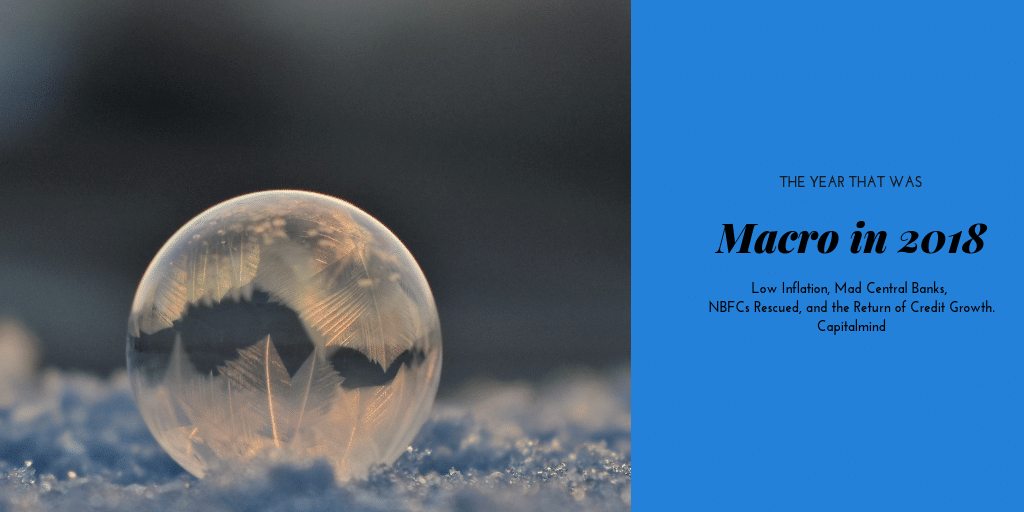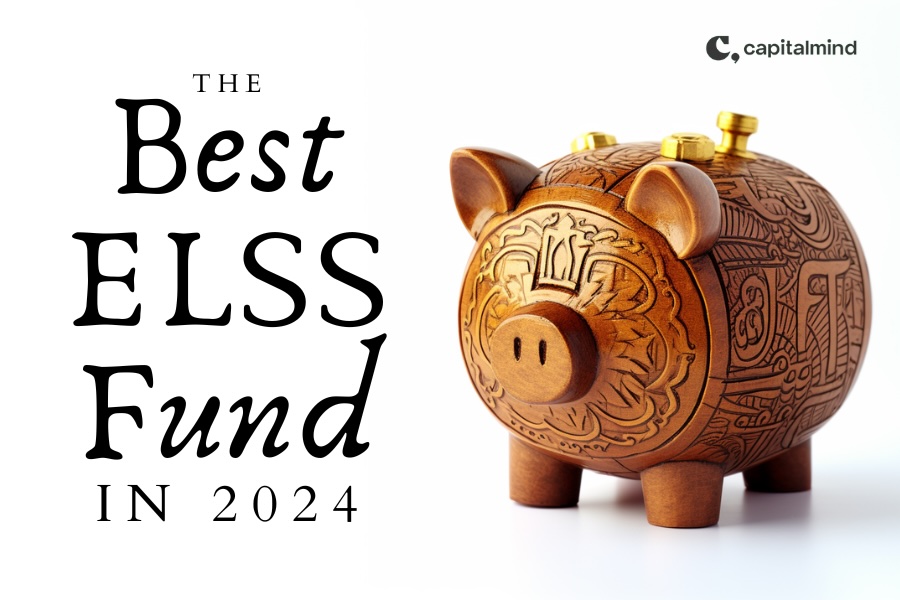As 2018 comes to a close, the macro seems to have become interestingly important. The most important thing this year seems to have been the oil and the rupee. The rupee started the year at 63.6 to a dollar. It ended around Rs. 70, but has seen 74 in the meantime.

It depreciated across the board with all currencies. A 10% depreciation though isn’t quite all that bad because…
Foreign Institutions Sold The Most Since Forever
Foreign Portfolio Investors (FPIs) sold over 80,000 cr. in 2018, with most of the sales coming in the month of October, when things became really violent with the Index. They sold the highest amount of equity since 2008, and added with the debt sales of 44,000 cr. we have seen the biggest FPI exit ever.


At Rs. 80,000 cr. though its only about $11.5 billon that left India.
However, we’ve seen a very large amount of FDI coming in as well. Foreign Direct Investment is where investors invest strategically (with a view to help the company grow or to directly manage it). All Venture Capital, equity investments in subsidiaries by foreign companies, or indeed a buyout of an Indian company by a foreign company are considered as FDI.
Between April and August 2018, the total FDI India saw was a whopping $ 18 billion in FDI coming in, and in Jan-Mar 2018, another $9 billion. That’s $27 billion of FDI in the calendar year till August, and that’s more than offset the outflows from portfolio investments.
In general this is good news on the macro front, because FDI tends to stick around for longer, and is more strategic in nature. We have an Amazon India and Uber India that need lots of continuous FDI from abroad, but even other startups like Swiggy, Zomato, Ola, Oyo etc. have raised cash. A larger FDI pile is typical of an economy that other countries want to participate in.
Inflation Remains Low: Probably Saved The Rupee Some
Inflation was an issue in 2018, not for being too high, but for being too low. It’s not negative (no deflation) yet but food prices have seen a decline. Inflation’s at 2% and the lowest in a long long time.

We wrote earlier this year about why the fall to 70 to a USD was not a big deal for the rupee. (Read article) The key point is that in general the fall in the rupee corresponds to the difference in Inflation in the two countries (India and the US). The difference reflects in lumpy falls in the rupee (typically once in five years) With the inflation difference now below 1% (it used to be 5% a year) further falls in the rupee are likely to be much lower.
Low inflation reflects farm distress too and this will need a government bailout. Given the size of bailouts that banks have received, it would make more sense to provide the most stressed areas like farmers, with direct cash – most of that money remains in India and gets spent in the next cycle. However this will hurt the government fiscal equation, and subsequent budgets will need more money to account for it.
Forex Reserves Fall, RBI Unwinds Forwards
Forex Reserves fell as the RBI sold dollars in order to pay the outgoing FPIs as they exited positions. The RBI doesn’t like to do this, but it has to – because no one else in India has (or can have) the supply of dollars that the RBi does. TO change that, we have to free the capital controls on the rupee.

The RBI also has forward positions and in the last year it built a large chunk of forward purchases too, which would have boosted reserves to over $440 billion. However, in 2018, all forwards were unwound, and with the sales, the RBI ended with a shady above $390 billion in reserves.
People often ask if this is enough. With crude at $50 or so, it’s most definitely enough for import cover. It might not be enough if all foreign debt by corporates has to be repaid (but who repays all debt at the same time? Any country required to do so will have a massive debt situation, and India needn’t try to live up to insane standards thought about by some economist that wants to apply it selectively to some countries)
Overall, in the coming years, India needs to reduce the need to keep forex reserves and instead, free its own currency. It’s trying to do that with Dubai and Iran, and if it continues down this road, it might be able to do better. Don’t expect it in 2019, though.
The RBI Balance Sheet: More Government Bonds
When the RBI sells dollars, it takes rupees out of circulation. And that impacts rupee liquidity. In order to stem that, it has to print more rupees, so it buys government bonds (through OMO operations). THat’s evident so far:

Remember that the right axis is much higher (in Rs. billion) than the left axis so it’s not like India’s going absolutely nuts with government bond purchases.
More OMOs will be required to replace the exited liquidity and will continue in the next year.
Bond Yields Have Fallen
In October there was a major spike in yields in the corporate bond market, as the IL&FS default took place.
IL&FS is a major institution that owes, through its subsidiaries, over Rs. 90,000 cr. in debt. To insurance companies, banks, mutual funds and other such buyers. They ran into a cash flow situation and defaulted on all short term debt in September this year.
That’s caused a spike in debt yields substantially. By September even government bonds were quoting above 8.2%, at the 10 year level (and indeed even at 2 year levels)

This has now moderated to around 7.5% (green line above) across the curve. This is, in general, good news for India as rates are effectively falling.
Bank Credit Growth is Back, Corporate Lending Resumes
2018 saw the return of Bank Credit Growth – ends at over 15% on the bank of a temporary NBFC liquidity crisis. Banking was screwed in India after many banks just refused to lend, and others weren’t allowed to, from regulatory restrictions. That seems to have slowly eased, as lending growth is back up to higher than nominal GDP.

The major part here is the turn in industry credit, which had fallen to multi year lows in terms of growth.

And the crisis in NBFCs was, in a way, a reminder of the fragility of a leveraged ecosystem. Costs for NBFCs went up because the people they borrowed from, the mutual funds mostly, stopped lending to them because of the IL&FS default. IL&FS was a AAA rated entity, but couldn’t pay back its loans, and many mutual funds held its paper.
Banks Rescue NBFCs, Lend Them 2 Lakh Crores In The Last Year
The banking system actually rescued NBFCs. Because the highest growth of credit in the last year was to: NBFCs.

With over Rs. 2 trillion in fresh loans from banks, NBFCs actually augment the system. Noteworthy is that housing still remains one of the strongest borrowers – with over Rs. 1.5 trillion in total, of which Rs. 1.2 trillion (1.2 lakh crore) is for high cost housing.
The World Outlook
Things don’t look great in the rest of the world. The massive QE unleashed by the US, the ECB and the BOJ hasn’t worked much, though the US economy is running very strong so far. The US is unwinding the QE it has done, partly by raising interest rates (four times in 2018), and partly by cutting its balance sheet allowing bonds it holds to mature and to not reinvest the money back.
This has caused US markets to correct substantially because hey no one knows what will happen. But this is temporary, in our view, because it’s simple – if the providing of QE took 10 years to help the economy (and only a tiny fraction of it was actually responsible) then the taking away of this money won’t do much.
In any case, the US Fed’s balance sheet compression only reduces excess reserves at banks. Which is still at $1.6 trillion, so a $50 billion per month will take three years to reduce to zero (which is what it was pre-2009).
Even though the Fed has hiked rates, the 10 year bond yield is at 2.72%, the lowest in 2018 and about at the same rate as it was at the end of 2017. This is a signal, perhaps, that the market expects a less crazy pace of hikes coming up.
The problem though is the excesses in other countries, whose central banks have violated all principles of central bank decency. Central banks shouldn’t buy risky assets, they tell countries like India, and expect us to maintain “forex reserves”. Then, they themselves go and buy absolutely crazy stuff. Like, for instance, Japan. The BOJ owns 77% of the Japanese ETF market. (Link) Can you believe that? They print yen, and use it to buy their country’s stocks. Imagine if RBI were to buy Reliance or even the Nifty – that would be outrageous.
But Japan does and gets away with it. The BOJ now is among the top 10 shareholders in 40% of Japan’s listed companies. They don’t vote, and they aren’t active – so management behaviour too will change. Plus, when the BOJ needs to unwind this exposure and takes losses, what happens to the central bank’s accounts? Yuck.
And then the Swiss Central Bank prints Swiss Francs, converts that to Dollars, and buys any stock that it wants. It owns $87 billion of stock, including $3 billion of Apple, $2 billion of Alphabet (Google) and so on. (Link)
The European Central Bank won’t buy stocks, but buys a truckload of junk bonds. That’s like the RBI buying DHFL bonds.
China too has distortions but remains one of the stronger countries in the world due to enormous domestic consumption. The story there is of too much debt – not different from the west in terms of numbers or leverage, but different in the sense that they have the ability to handle most of it due to the strength of the economy. Not saying this won’t see a horrible time in the middle, but it is not likely to stay for long.
This will entail a change in the world over some time – India and China need to take leadership roles eventually but India will take decades to get there.
The end-game – Oil Price Distortions and Geopolitics
For too many countries, the last four years have been a problem. The US has gone from becoming an oil consumer to an oil exporter. For the first time in 75 years, the US exports more oil than it ships in, exporting 3.2 million barrels per day in the last week of November. (Link)
With oil prices spiking in October due to the fear around Iran sanctions, the market looked like oil would go back to the $100 days, after reaching $85. It swiftly corrected by the end of 2018 to around $50.
Add to this the rapid growth of technology that enables electric cars, which can simply yank the carpet from under the crude oil regime.
This changes the game for countries that are solely dependent on oil – from Saudi Arabia to Nigeria to Venezuela. Venezuela’s in a death spiral with inflation at extreme levels. Nigeria went through a horrendous time and is still trying to figure its way out. Saudi Arabia is going to face tough questions in the coming years, and it remains backward despite all the oil riches. If they haven’t diversified, they’re going to realize that the hen that laid those golden eggs isn’t going to be there much longer.
There are geopolitical and economic consequences, to the rest of the world. In such a world, where you have extreme leverage and central bank madness in one part, and geopolitical instability in another part, the risk runs high for economic damage to follow. However, in this light, India’s actually doing well – it’s deleveraged, it’s trying to focus more on electric cars and power, and it has a very large middle class that can consume. But to do more, we have to free it – build more banks and institutions, frame less insane rules for startups and foreign investment, and give the rupee a lot more freedom. Let’s hope that happens.
At Capitalmind, we’ll continue to build on the macro focus, and have a lot more in the years to come.
We wish you all a Wonderful 2019! Have a great year ahead.




